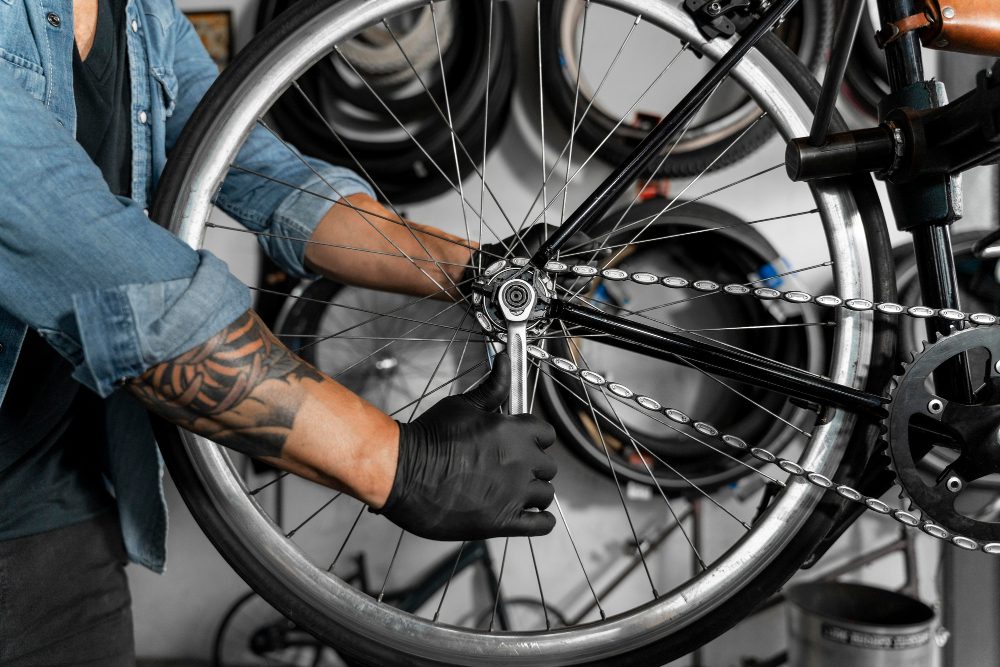How often do you change fork fluid?
In order to keep your bike’s suspension system working smoothly, it is important to regularly maintain and service it. One crucial aspect of this maintenance is changing the fork fluid. The fork fluid, also known as fork oil, plays a vital role in ensuring proper operation and performance of the front suspension.
Why should you change fork fluid?
The fork fluid in your bike’s suspension system is subjected to extreme conditions, including high temperatures and pressure. Over time, the fluid can break down, lose its viscosity, and become contaminated with dirt, debris, and moisture. This can lead to a loss of damping performance and ultimately affect the overall handling and comfort of your bike.
Regularly changing the fork fluid helps maintain optimal suspension performance, improves ride quality, and extends the longevity of your bike’s front suspension components. It allows for smoother operation, better handling, and increased control on various terrains.
When should you change fork fluid?
The frequency of changing the fork fluid depends on various factors such as your riding style, the type of terrain you frequently encounter, and the manufacturer’s recommendations. As a general guideline, it is advisable to change the fork fluid every 12 to 24 months or every 6,000 to 10,000 miles, whichever comes first.
However, it is important to note that some manufacturers may have specific intervals mentioned in their user manuals, so it is always recommended to follow their guidelines. Additionally, if you frequently ride off-road or in harsh conditions, you may need to change the fork fluid more often to ensure optimal performance.
How can you tell if the fork fluid needs changing?
There are a few indicators that can help you determine if it’s time to change the fork fluid. If you notice any of the following signs, it is a good idea to inspect and potentially change the fork oil:
- Loss of suspension performance
- Inconsistent damping action
- Unusual noises or vibrations from the front suspension
- Leaking fork seals
- Excessive fork dive under braking
If you experience any of these issues, it is best to consult with a professional mechanic or refer to your bike’s user manual for specific instructions on checking and changing the fork fluid.
The process of changing fork fluid
Changing the fork fluid involves several steps and should ideally be done by someone with mechanical knowledge and experience. Here’s a general overview of the process:
- First, consult your bike’s user manual to identify the correct type and amount of fork oil required.
- Securely lift and support the front of your bike to access the front suspension components.
- Remove the front wheel, brake caliper, and any other obstacles that may hinder access to the forks.
- Release the fork caps and allow any residual pressure to escape.
- Drain the old fork oil by removing the drain screws located at the bottom of the forks.
- Clean the inside of the forks thoroughly to remove any dirt or debris.
- Refill the forks with the recommended amount and type of fork oil.
- Reassemble the front suspension components, ensuring proper torque specifications are followed.
- Bleed any air from the forks and ensure proper suspension operation.
- Finally, test ride your bike to confirm the improved suspension performance.
“Regular maintenance and servicing of your bike’s front suspension, including changing the fork fluid, can greatly enhance your riding experience and ensure optimal performance.” – Bike Maintenance Expert
Remember, if you are not confident in performing the fork fluid change yourself, it is always recommended to seek the assistance of a professional mechanic who can ensure the job is done correctly and safely. Additionally, maintaining a regular service schedule for your bike’s suspension system will help prolong its lifespan and keep you enjoying smooth and controlled rides for years to come.
How long do carbon handlebars last?
Carbon handlebars are a popular choice for cyclists due to their lightweight yet sturdy nature. They offer excellent vibration dampening properties and can enhance the overall performance of a bike. However, just like any other component, carbon handlebars also have a lifespan.
Factors Affecting Lifespan
Several factors can influence how long carbon handlebars last:
- Riding conditions: Frequent exposure to harsh weather conditions, such as rain or extreme heat, can deteriorate the handlebars faster.
- Crashes or impacts: Carbon handlebars can withstand a certain amount of force, but significant crashes or impacts may weaken them.
- Maintenance: Proper care and regular inspections can help identify any potential issues before they become serious.
Average Lifespan
The average lifespan of carbon handlebars can vary depending on the manufacturer and the specific model. Generally, they are designed to last for several years of regular use.
Signs of Wear and Replacement
It is important to regularly inspect your carbon handlebars for signs of wear or damage. Some indicators that it may be time to replace them include:
- Visible cracks or delamination
- Excessive flex or movement
- Loose components
Maintenance Tips
To prolong the lifespan of your carbon handlebars, consider the following maintenance tips:
- Clean your handlebars regularly with a mild detergent and water.
- Inspect for any signs of damage before and after rides.
- Ensure proper torque on bolts to prevent over-tightening or loosening.
- Store your bike in a dry and stable environment.
Remember: If you have any doubts about the condition of your carbon handlebars, it is always best to consult a professional bike mechanic for an expert opinion.
Conclusion
Carbon handlebars can last for several years with proper care and maintenance. Regular inspections and addressing any signs of wear promptly will help ensure their longevity. However, if you notice any significant damage or feel uncertain about their condition, it is advisable to replace them to maintain your safety while riding.



